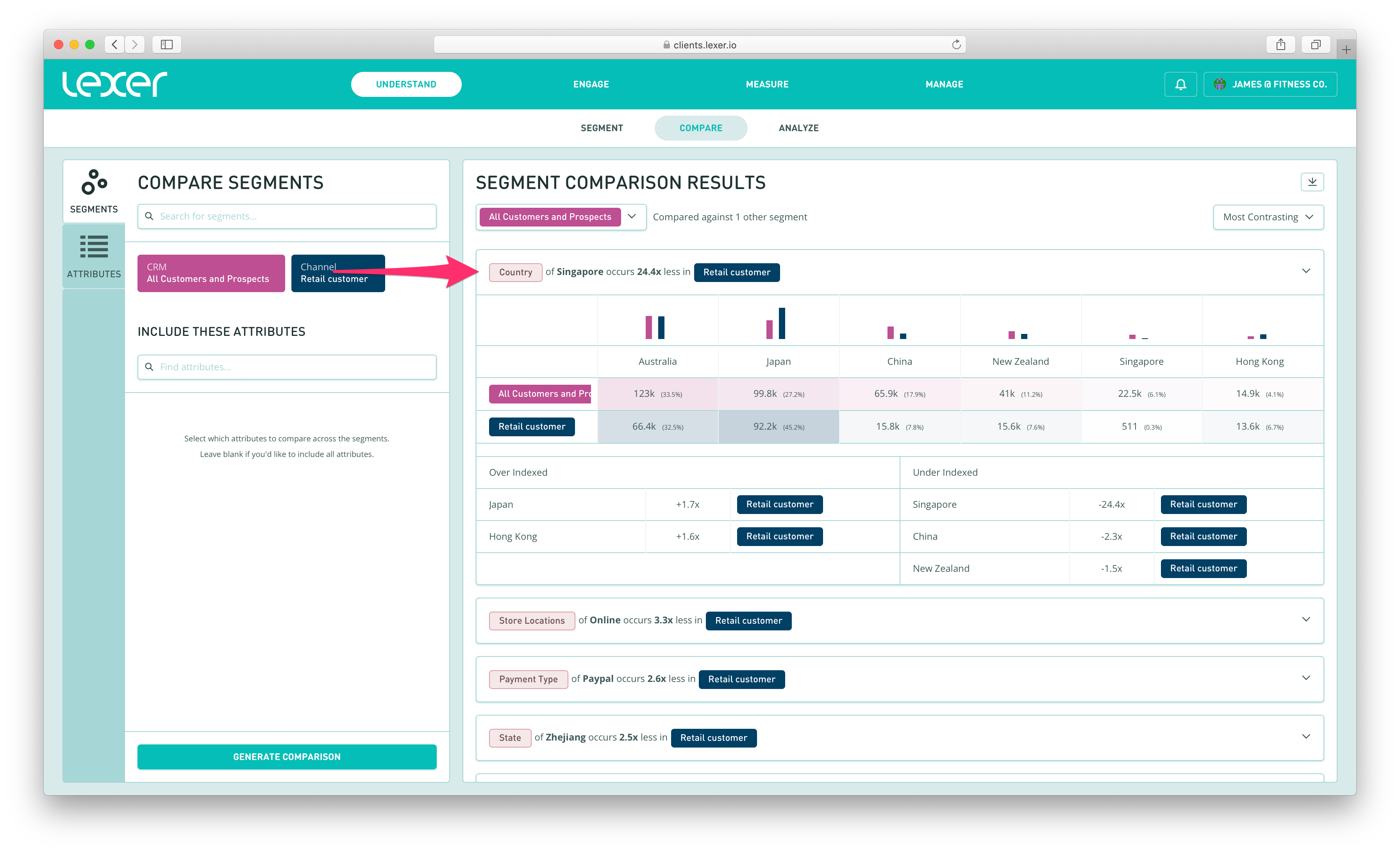Compare segments
Compare your customer segments to understand key similarities and differences
We’ve all spent hours manually comparing data, exporting and sending it from team to team for analysis. Using Compare, you can instantly generate indexation analysis of your customer segments in seconds. This article will show you how to compare segments and analyze the results.
Comparing segments
Start by selecting the segments you wish to compare. Add them to the Compare Segments and click Generate Comparison. You can add up to 4 segments for comparison.

Understanding your results
Each item in your result represents an Attribute we have compared in each segment. Attributes with the most contrasting values are presented first; however, you can modify the sorting in the top right corner of the report. Clicking an Attribute in the result will display a deeper analysis of the insight. For example, in the analysis below we can see how Country compares between our segments 'Retail customers' and 'All Customers and Prospects'.

Attribute values that over index in a segment mean that they are overrepresented, indicating a theme or point of difference for those customers. In the example above, we can see that Japan and Hong Kong index highly in the 'Retail customers' segment for customer country.
Your base segment (indicated in the dropdown in the top left of your results) indicates which segment all other segments are being compared against. When comparing just two segments, it does not matter which segment is selected as the base. When comparing three or four segments, we suggest using the largest segment (i.e. all customers) as your base.
Data powering your segment comparison results can be downloaded from the top right corner.
That's a wrap!
That's the essence of comparing segments! In this article we've learned what comparing a segment is, how to do it, and how to understand the results. If you'd like to ask any questions, don't hesitate to reach out to Support using the chatbot in the bottom right of the page.

